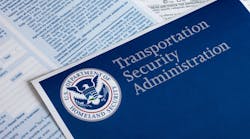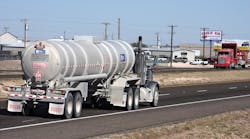The US Court of Appeals for the Washington DC Circuit issued its long-awaited ruling on August 2 on the American Trucking Associations’ challenge to the most recent revisions in the hours-of-service (HOS) rules. The court struck down a provision requiring short-haul drivers to take 30-minute off-duty break, but left the bulk of the rule unchanged.
The reaction was mixed, with the federal regulatory side embracing the decision and the trucking industry expressing disappointment. Initial reactions suggest the HOS issue still is not completely put to bed.
The Federal Motor Carrier Safety Administration welcomed the ruling. In an official statement, FMCSA said: “We are pleased with the court’s decision to uphold the department’s (Department of Transportation’s) hours of service requirements for truck drivers. The ruling recognizes the sensible data-driven approach that was taken in crafting this important regulation to increase safety and reduce driver fatigue—a leading factor in truck crashes. The ruling also provides added certainty for all affected, moving forward.”
In actuality, the ruling suggests that the court found a number of flaws in FMCSA’s rulemaking process even though it declined to “second guess” the agency’s methodologies and interpretations of the evidence, instead taking a “highly deferential” approach to the agency’s presumed expertise, concluding that “FMCSA won the day not through the strengths of its rulemaking prowess,” but rather through “an artless war of attrition.”
Speaking for the American Trucking Associations, Dave Osiecki, ATA senior vice president of policy and regulatory affairs, said: “While we are disappointed the court chose to give unlimited deference to the Federal Motor Carrier Safety Administration’s agenda-driving rulemaking, the striking down of the short-haul break provision is an important victory.”
John Conley, past president of National Tank Truck Carriers, said: “If nothing else, our drivers, shippers, and dispatchers will now know the hours of service rules under which they will operate for now and unless or until the FMCSA begins another rulemaking. NTTC is awaiting a decision from FMCSA on a request we developed with ATA to provide a special 30-minute break provision for our drivers who are required to attend their vehicles at all times as part of both safety and security regulations.”
Conley added that it is important for tank truck carriers to note that the 30-minute rest break requirement applies to all drives required to keep a log and will except only those who operate only within a 100-mile radius of their normal work reporting location. The work shift can’t be more than 12 consecutive hours.
“This rule exception provides little relief to our local gasoline and dry bulk drivers who do maintain logs even in local operations,” he said.
While the 30-minute, off-duty break requirement for short-haul drivers was vacated, the Court upheld the new limitations on the use of the restart and the requirement that the 30-minute driving break be free of all on-duty activity, despite agreeing with ATA that the FMCSA’s justification for the rule had serious flaws.
The Court found no merit in the challenge that came from a coalition of anti-truck interest groups that have repeatedly fought to make a working regulation more restrictive, concluding it “would have been unreasonable and unfounded on the record” to reduce the driving day from 11 to 10 hours. The Court also summarily rejected the groups’ call to eliminate the restart altogether.
“The court recognized on numerous occasions the shortcomings of the agency’s deliberations, so despite upholding most of the rule, we hope this opinion will serve as a warning to FMCSA not to rely on similarly unsubstantiated rulemakings in the future,” Osiecki said. “One thing this rulemaking makes clear is that fatigue is a small problem when viewed through a crash causation lens. ATA hopes FMCSA will work with the trucking industry to address more pressing safety and driver behavior issues, including those than can be directly affected through proven traffic enforcement activities aimed at unsafe operating behaviors.”










